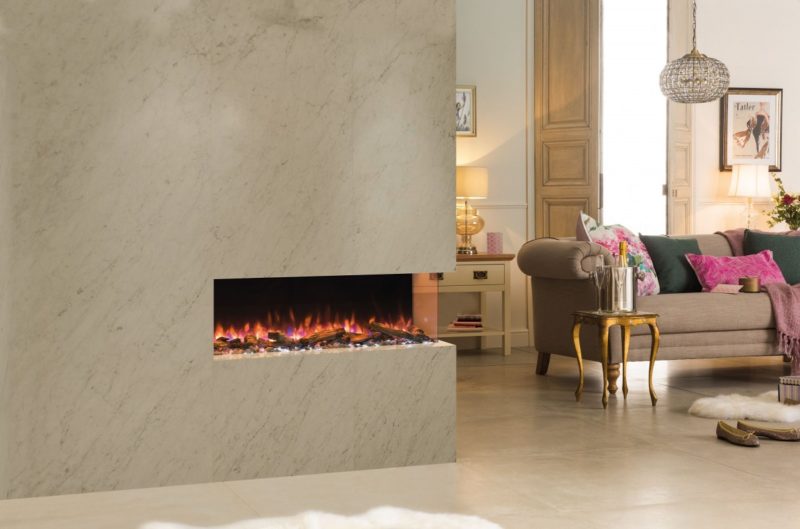Are you quite curious if what is a stove buck? With this, you can sit before a fire even if you don’t have a fireplace. A stove, like Bucks, provides a fireplace to your house. These stoves have their own smoke ventilation chimney. The damper is one of the essential components of these stoves.
Buck furnaces utilize catalytic combustion technology to improve the energy efficiency of the furnace while minimizing smoke generation. The combustor burns particles that are usually produced by a wood burner. As a consequence of the more thorough combustion, the temperature of the stove increases.

Its typical burning temperatures are between 1200 and 1600 degrees Fahrenheit. The Buck furnace controller regulates the passage of the fire into the catalytic fuel flow from the furnace.
Damper Of A Buck Stove
What is a stove buck? First, take note that you should not mistake the damper on your fireplace with the damper on the buck stove. Some versions may be used as a fireplace wood-burning insert. The manual fireplace chimney damper is used during the offseason to shut down the chimney and keep birds and animals out. Furthermore, the Buck fireplace bypass damper sends smoke through or after the catalytic fire depending on the fire temperature.
#1. Uses of a damper in a buck stove
When a fire starts in a cold stove, the damper should be completely open. This will remove flue smoke from the catalytic combustion unit, thereby protecting it from flames.
When the light is off, the 700 to 900-degree temperature reaches a fire for the catalytic combustion system to function, the damper is closed, and smoke is transferred for continuous combustion to the combustion system. Learn how wood-burning fire combustion systems work.
When fueling a burning stove, ensure that the bypass damper is opened so that the smoke may escape from the fireplace. Open the fuel door, add wood carefully in a north-south orientation, and shut it. The damper should only be closed when the fuel door is closed.
#2. Buck stove dampers issues
Abuse of the damper was sometimes associated with fire issues with the buck stoves. The damper will not function correctly if the bypass is opened when the stove has achieved the required temperature and the heat generated by the stove is less than anticipated. Open the bypass damper for additional fuel when opening the door of a buck stove. Keep in mind that the smoke will blow into the room instead of the fireplace if you close it.
5 Differences Between An Old Stove Buck Insert And A Modern One
Old stove bucks were typically within a brick fireplace without any accessories. Later it was found, however, how quickly these ancient buck furnaces loaded creosote to the chimney.
This accumulation of creosote increases the danger of chimney fires, particularly for individuals who clean their chimney just once a year. Not only that, but these antique fireplaces are also emitting a lot of smoke that your neighbors don’t enjoy. Other than that, the two types of stove inserts vary in different aspects. In this section, let us look at how the two differ by touching on some factors below.
#1. Efficiency
One of the greatest things about a modern insert for wood stoves is how effective they are compared to an old stove. The ancient bucket stove transported a lot of the heat generated by the fire through the fireplace. On the other hand, the contemporary insert for the woodstove returns the bulk of the heat to the room.
#2. Burn times
The length of the burn is another aspect to consider. With the old buck stove, you could fire for a few hours, maybe at most five. This is intended to keep the fire running to prolong the burning duration. Conversely, the burning period may be anywhere from 8 to 10 hours with a contemporary wood stove. The longer burn time is wonderful, but it also helps to increase efficiency.
#3. Wood usage
Wood fireplace inserts are built to enhance the setup of your existing wood fireplace. A contemporary insert for wood stoves consumes less fuel and more burns. Half the wood in the new inserts is used for traditional bucket fires. The use of less wood saves money, time, and space, particularly when your own wood is chopped.
#4. Less smoke
Converting an old bucket stove into a contemporary wood stove that generates fewer fumes would be helpful with all smoke. This is because contemporary inserts are cleaner than older stoves. Modern inserts burn wood and produce less smoke, helping to decrease levels of carbon monoxide.
#5. Blowers
Blowers are included in both kinds of stoves, although buck stove inserts feature more efficient blowers. In addition, new inserts may feature stronger and faster blowers, enabling more efficient circulation of warm air. And that’s pretty much it. Although the old buck stove insert is different from the new ones, they still share the same purpose: to keep your home warm. For more interesting articles, here is a topic on how much is a stainless steel fridge.
It’s A Wrap!
In understanding what is a stove buck, you should be aware that you can’t use a buck stove without a damper. However, understanding how it works may help you solve your stove issue, so we decided to come up with this post to provide you everything you need to know regarding stove buck.
Also, seven items should never be burned in a buck stove, or else the catalytic combustion would fail. The buck stove is not suitable for burning wood, coal, garbage, cartons, chemicals, colored paper, or waste.
